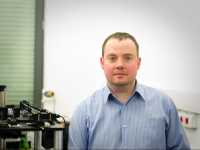22 Jan Tunable Lens Allows Detailed Imaging of Entire Eye
MedicalResearch.com Interview with:
Ireneusz Grulkowski, PhD
Assistant Professor
Bio-Optics & Optical Engineering Lab
Institute of Physics
Nicolaus Copernicus University
MedicalResearch.com: What is the background for this study?
Response: The ophthalmic diagnostics has undergone a revolution over the last 30 years. The access to new modalities allowed to understand the process of development of different eye diseases of the retina and the anterior segment. In particular, optical coherence tomography (OCT) demonstrated the feasibility in visualization of microarchitecture of the ocular tissues. However, most of the ophthalmic equipment is dedicated either to imaging the anterior segment of the eye (e.g. the cornea) or to retinal imaging. This is due to the fact that the eye is composed of the elements, such as the cornea and the lens, that refract the light.
In this report, we wanted to address that challenge. We compensated the refractive power of the eye by the application of the tunable lens. The focus tunable lens is the example of active optical element that changes its focal distance with the applied electric current.
MedicalResearch.com: What are the main findings?
Response: Together with the research team of Prof. Pablo Artal at the University of Murcia, we showed that focus tuning in ophthalmic instrument interface improves the quality of OCT images. In particular, we were able to demonstrate the details of vitreous body attachment sites to the crystalline lens and to the retina. We did not expect those results. Furthermore, the focus tuning enabled integration of the imaging modes for the front and the back of the eye in one simple design. This novel mode of operation was finally used to measure the intraocular distances – the procedure called ocular biometry being important before the cataract surgery. We demonstrated that our novel system can work as an ocular biometer.
MedicalResearch.com: What should readers take away from your report?
Response: This study demonstrates that it is possible to account for the refractive power of the eye and to develop an multi-purpose instrument for eye imaging and ocular biometry. Merging optical and imaging technologies enables new applications of modern instrumentation.
MedicalResearch.com: What recommendations do you have for future research as a result of this work?
Response: I would like to thank both research teams for fruitful cooperation. We also acknowledge the support of the Polish Ministry of Science and Higher Education (Iuventus Plus) as well as the European Research Council (Advanced Research Grant SEECat).
Citations:
Ireneusz Grulkowski, Silvestre Manzanera, Lukasz Cwiklinski, Franciszek Sobczuk, Karol Karnowski, and Pablo Artal
Optica Vol. 5, Issue 1, pp. 52-59 (2018)
MedicalResearch.com is not a forum for the exchange of personal medical information, advice or the promotion of self-destructive behavior (e.g., eating disorders, suicide). While you may freely discuss your troubles, you should not look to the Website for information or advice on such topics. Instead, we recommend that you talk in person with a trusted medical professional.
The information on MedicalResearch.com is provided for educational purposes only, and is in no way intended to diagnose, cure, or treat any medical or other condition. Always seek the advice of your physician or other qualified health and ask your doctor any questions you may have regarding a medical condition. In addition to all other limitations and disclaimers in this agreement, service provider and its third party providers disclaim any liability or loss in connection with the content provided on this website.
Last Updated on January 22, 2018 by Marie Benz MD FAAD

